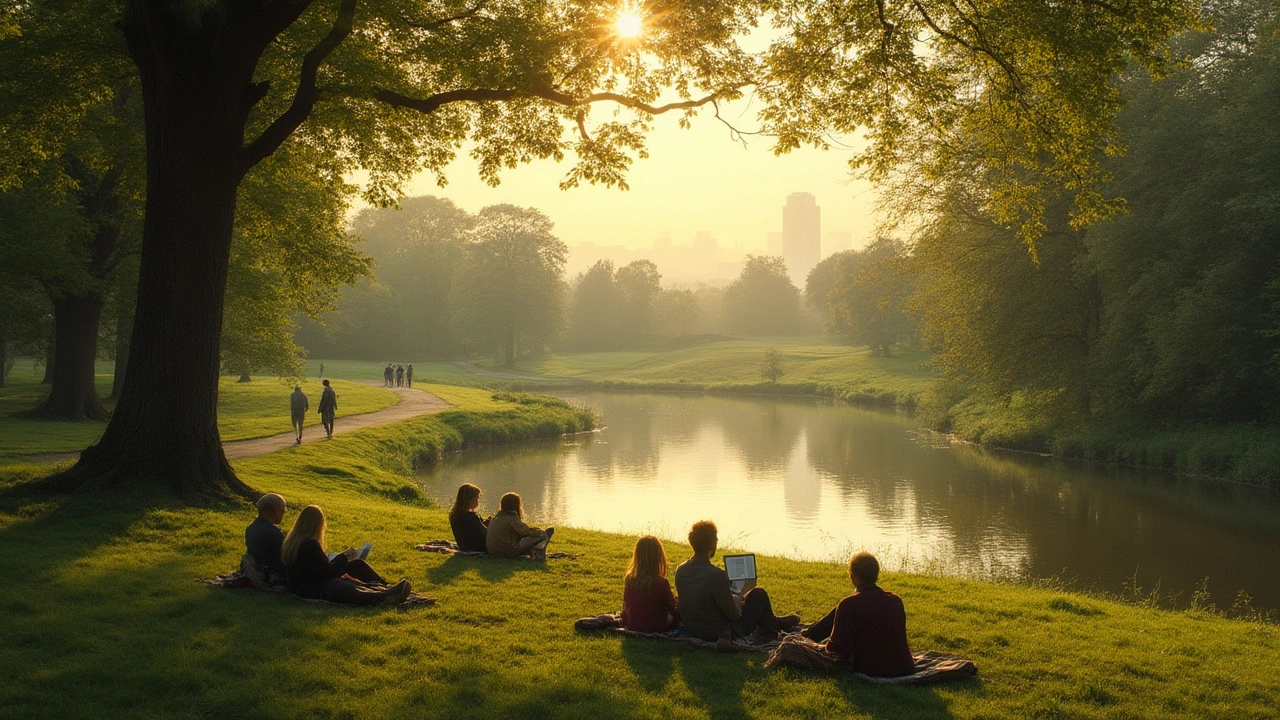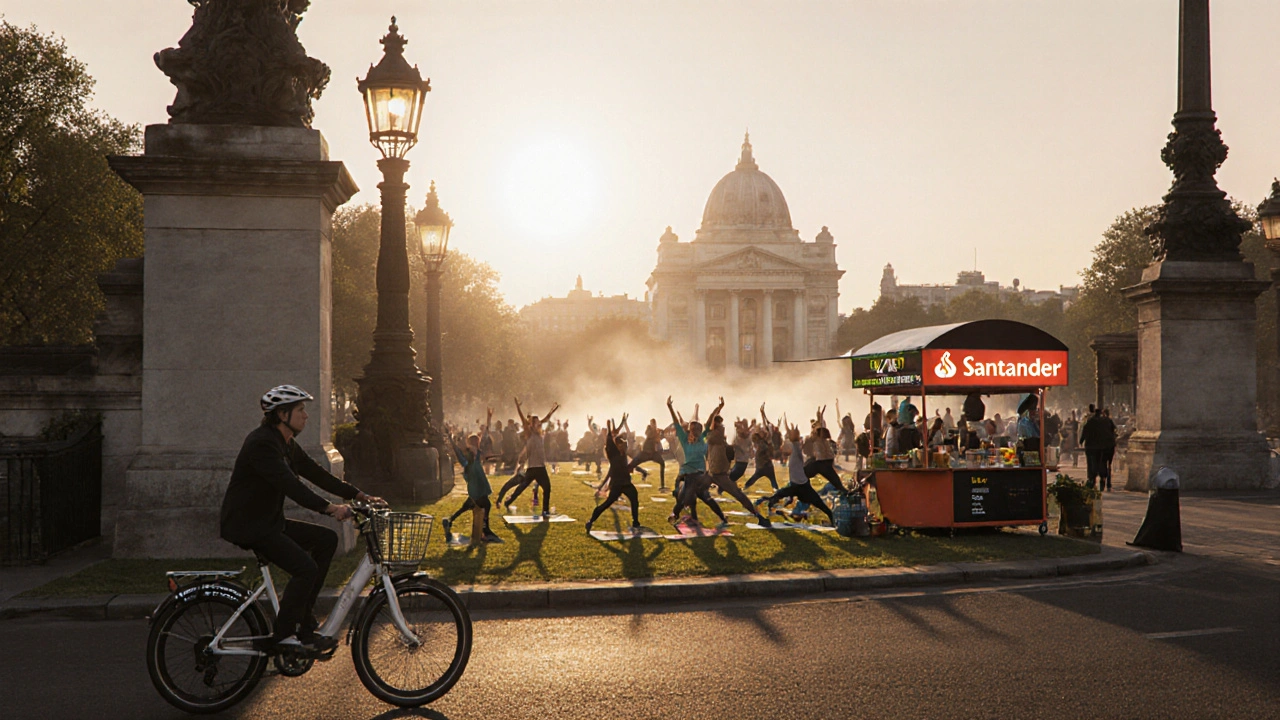Best Parks in London for a Complete Digital Detox Experience

If you’ve ever tried to escape London’s relentless buzz—emails pinging, tube stations spilling commuters, notifications arriving by the dozens—you’ll know the craving for peace is real. Sometimes, it feels like everyone in the city is chain-tied to a screen. But here’s something people rarely talk about: London is full of green spaces that practically force you to stop scrolling and actually breathe. Ditching your phone isn’t just a wellness trend; it’s become something of a survival skill in modern London life. Whether you’re a long-time local or fresh to the city, digital detoxing in a huge park can be just the ticket for resetting your mind. Want to know the best bit? These leafy pockets aren’t just refuges for your data-hungry thumbs—many come packed with history, curious locals, and plenty of space to lose yourself, offline. London parks were practically made for escaping the world of Wi-Fi.
Why London Parks Are Ideal for a Digital Detox
There’s a strong case for making a tradition of disconnecting from your phone in London’s parks. For starters, they’re massive. Think Hyde Park, Hampstead Heath, Richmond Park—you could stroll for hours and not see the same patch of grass twice. Unlike the small, high-maintenance squares squeezed between office blocks in other cities, London’s parks are ancient, sprawling, and have this wild, unpredictable energy. They’re not just for show; people actually use them to get away. You’ll spot joggers at dawn, families at midday, musicians with headphones off, and even the odd cyclist stopped on a bench just staring into space. There’s a quiet code here: in parks, it’s not weird to ignore your phone.
The city’s geology gives its green spaces a unique feel, too. The west tends to be dense and historic—think Kew and Richmond—while north London’s hills and woodlands like Highgate Wood or Hampstead Heath bring drama and complete mobile dead zones (seriously, try to get full bars up on Parliament Hill). It’s not just about escaping Wi-Fi and 5G, either. These parks often come with traditions: people picnicking under centuries-old oaks, tai chi at sunrise, and swimmers braving the open-air ponds year-round.
Then there’s the wildlife. It’s almost jarring how close you can get to deer in Richmond Park or watch kingfishers along Regent’s Canal without a single alert lighting up your screen. Some parks, like the wild Plantlife meadow in Walthamstow or the rewilded bits of Peckham Rye, actually invite you to switch your attention from your phone to your senses. The Royal Parks Foundation found that three out of four locals felt "significantly less stressed" after a device-free hour in nature. Even on weekends, when half the population seems to be out for a walk, it’s easy to find a quiet spot if you’re willing to wander.
But what if you want to make it official? Services like Unplugged and Digital Detox London have started hosting events: ‘silent’ coffee mornings, device-free runs, foraging walks, even digital-free yoga. They’re pretty niche, but growing. And the feedback? Off the charts. Ask anyone who’s tried a silent wander through Epping Forest or joined a no-phones wild swimming club at Hampstead Heath—the biggest revelation isn’t what you see, but how different you feel.
London parks aren’t just spaces—they’re escape valves for the wired brain. Want to make it stick? Try leaving your phone at home, or at least in your backpack. Bring a book, a sketchpad, or rope in a friend to people-watch. If you’re worried about getting lost, snag an old-school paper map. Yes, they still exist. And here’s a pro tip: the best moments happen when you stop planning them.

The Top Parks to Unplug and Recharge
Picking a park for a digital detox isn’t just about size or renown. It’s about vibe, wilder corners, and distance from the nearest Starbucks. Let’s start with Hampstead Heath: 790 acres of wilderness, with woodlands, open meadows, and (if you’re braver than me) the legendary swimming ponds. Phones disappear into pockets up here—especially at the top of Parliament Hill, where London’s skyline unfolds and the wind knocks your phone signal out. There’s a gentle, accepting atmosphere—the kind that makes you want to sit with a coffee and just watch the world go by. If you’re keen, you can wander through Kenwood House gardens, find the ancient viaduct, or picnic on the lawns around the Hill Garden (where phone calls are practically taboo).
Richmond Park is another heavyweight—plus, it’s London’s largest Site of Special Scientific Interest. Most locals know it for its deer (over 600 red and fallow deer roam the hills), but the park’s scale is what makes it perfect for unplugging. Put away your phone and spend an afternoon walking the Tamsin Trail, a 12-kilometre circuit around the park. The Isabella Plantation, a riot of colour in late spring, sits right at the heart; phones get forgotten fast once you start following butterflies from rhododendron to azalea. You’ll always see people wandering paths with a sketchbook, collecting leaves, or just sitting quietly—it’s that kind of place.
Don’t overlook Greenwich Park. Sure, there are crowds near the Royal Observatory, but walk past the flower gardens and deeper into the chestnut avenues and you’ll find your own space. The physical act of climbing that lovely hill draws you out of your head—plus the panoramic views of London reward anyone who makes the effort, screen-free.
The South’s got Dulwich Park, Brockwell Park, and, for the wild hearts, Sydenham Hill Wood—former railway tracks now shady and tangled, home to foxes, bats, and a surprising number of serious birdwatchers. Hackney’s hot, but Victoria Park ("Vicky Park" to East Enders) transforms on weekends into something between a community garden and a quiet forest, especially near the canals. Sit with an old copy of Time Out (yes, the paper kind) and spot people walking without headphones, chatting in real life.
In Walthamstow, the Wetlands offer the biggest urban wetlands in Europe. It’s less structured, with wild waterfowl and reed beds that drown out digital noise. It’s easy to spend a whole morning there just watching dragonflies, all without the urge to log on or swipe. Even Regents Park, despite its centrality, hides sleepy corners circles by blossoming cherry trees or secluded benches by the lake, perfect for a quick mindful break.
Want something off the beaten path? Try Osterley Park, especially the woodland trails and 18th-century gardens. Or wander into Epping Forest, still technically London, and get lost (intentionally) without a blue dot to show you the way home. A friend once told me the best therapy in London costs nothing—just “walk till you can’t remember your last group chat.”
Here’s a snapshot of London’s top parks perfect for escaping screens:
| Park Name | Size (Acres) | Key Feature | Likelihood of Mobile Signal Drop |
|---|---|---|---|
| Hampstead Heath | 790 | Swimming ponds, woodlands | High (Parliament Hill) |
| Richmond Park | 2,500 | Deer, Isabella Plantation | Medium in interior |
| Greenwich Park | 183 | Hilltop views | Low |
| Victoria Park | 213 | Canal walks, quiet lawns | Low |
| Walthamstow Wetlands | 520 | Birdwatching, wetlands | Medium |
| Sydenham Hill Wood | 27 | Ancient forest trails | Medium |
| Brockwell Park | 125 | Walled garden, open meadows | Low |
London’s culture runs deep in these spaces. From annual conker tournaments in Hampstead to sunrise solstice gatherings in Richmond, there’s a tradition for just about everyone, and most don’t involve a screen at all. The parks set their clocks by seasons, not notifications—bluebells in April on the Heath, deer rutting in autumn at Richmond, silent snowball fights in Greenwich on those rare snow days. These occasions pull people offline and into the scene, and nobody gets left out for having their phone switched off.

Practical Tips for a Successful Screen-Free Park Visit
It’s easier said than done, ditching your digital crutches, but London makes the process a lot less daunting. First, choose your moment. Early mornings, especially in spring and autumn, give you a park almost to yourself—even Hyde Park, usually full of camera-wielding tourists, is quiet before 8am. I’ve met old-timers in Regent’s Park who swear the light’s different before most people are awake.
If you’re anxious about disconnecting, start small. Try a phone-free hour, or leave your device in your bag, on airplane mode. Some people, like my mate Andy, actually keep a phone only for emergencies—no apps, no internet, just old-school calls and texts.
Bring something to ‘do’ that isn’t your phone. My go-to is a paperback picked up at Daunt Books, but others swear by sketching scenes, journaling, or even cloud-spotting (there are books for that, too). Foraging’s catching on, thanks to local groups organising mushroom walks in Hampstead and plant walks in Epping. Binoculars are seeing a comeback—birding without a podcast in your ear is a thing now.
Food matters. Pack a picnic—London’s delis and bakeries have you covered, from Gail’s sourdough to Brick Lane bagels. The old thermos is making a return, especially during those odd chilly summer days. Bring a blanket, stretch out, and let yourself nap.
I’ve seen parents get creative, too. Old-fashioned sports (think rounders or frisbee) work wonders for getting kids—and distracted adults—off their screens. Try kite-flying on Primrose Hill or Pond Dipping at Walthamstow Wetlands (the rangers even run no-phone nature days for families). The city’s open-air lidos and swimming ponds are phone-free by default—your device isn’t waterproof, after all. Even reading the park noticeboards for upcoming events or birdwatching sessions will give your thumbs a break.
Worried about missing something urgent? Let friends know you’re going off-grid for a while. Trust me, WhatsApp will survive without you. If you’re really concerned, write down Fiona’s mobile on a bit of paper, just in case. You’ll be surprised how many things can wait.
- Leave your phone at home or deep in your bag.
- Pick a park that matches your mood—woodsy, open fields, water-view?
- Bring an offline activity: sketchbook, book, camera (the old film kind), even a crossword.
- Prepare snacks—bakeries near Hampstead and Richmond are worth the stop.
- Invite a friend who gets the vibe—no phones, no pressure.
- Check the weather—London doesn’t do subtle drizzle.
- Tell someone you’re unplugging, so they don’t worry if you’re slow to reply.
- End your visit with a handwritten note or diary entry—remind yourself what a real break feels like.
Don’t stress about perfectly disconnecting. Even half an hour offline among ancient trees or deer-filled hills can make a difference. You’ll walk home lighter, less fidgety, and a bit more ready for the city’s constant buzz. London’s green spaces have outlasted centuries of change—odds are, they’ll help you shake off digital overload too.
